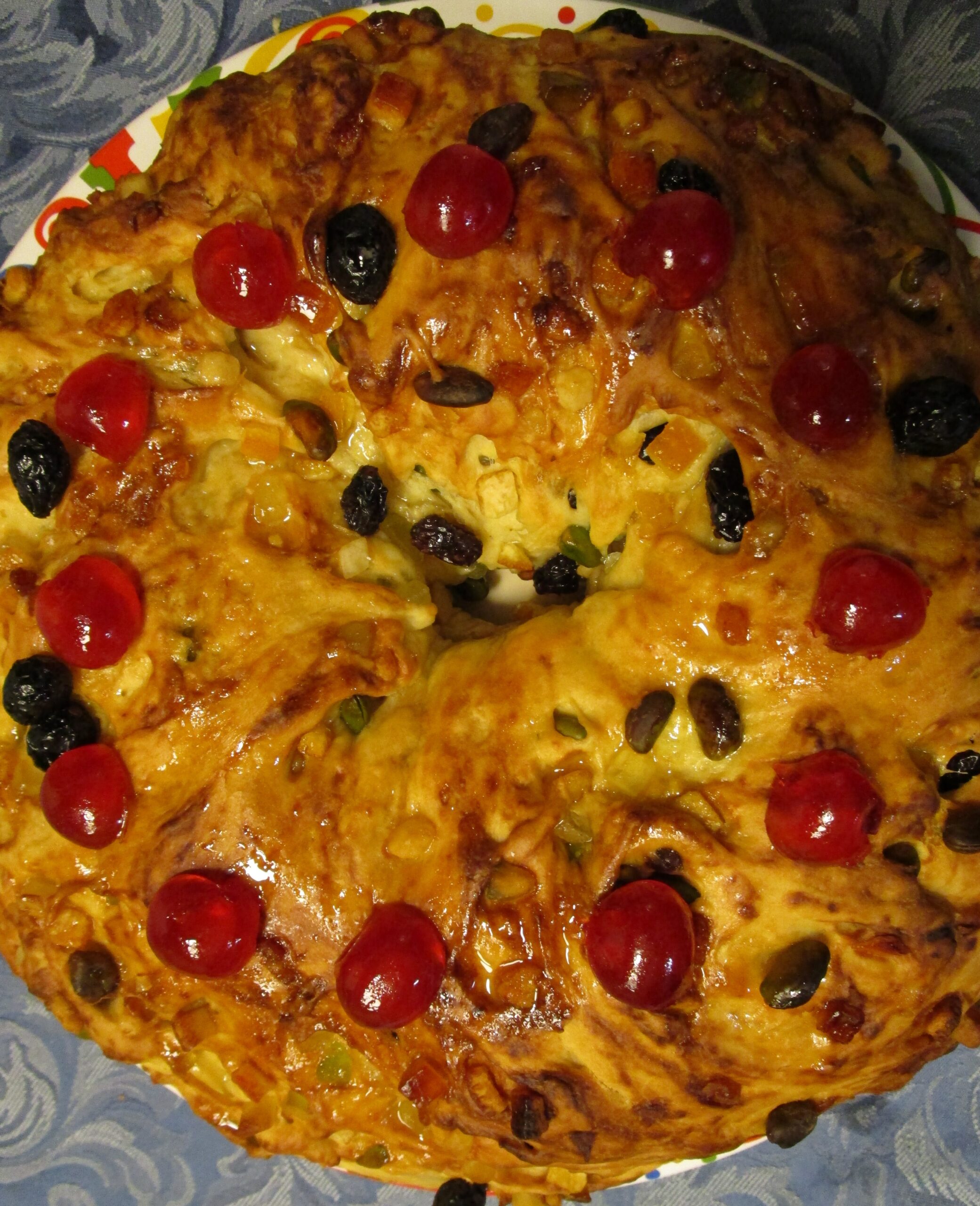
Good King Wenceslaus looked out, on the Feast of Stephen, when the show lay round about, deep and crisp and even.
Now I’m steering my time machine to Bohemia. Dec. 26 is the Feast of Stephen, and I have an added reason to take a closer look at King Wenceslaus today: We share a heritage. I’m half Czech. King Wenceslaus is not only the most revered Bohemian, he’s its patron saint. For that reason, I’m giving my medieval Christmas feast a Czech twist today.
King Wenceslaus

Wenceslaus (ca. 907-935) is to the Czech culture what St. Martin is to the German culture – an official who went out of his way to care for the poor. He had a reputation for his generosity, like the carol Good King Wenceslaus relates.
My Czech grandparents must have liked him, because they gave one of my uncles the middle name Wenceslaus (I’m looking at you, Uncle Jerry). Prague has a Wenceslaus Square (Václavské Náměstí, a Wenceslaus monument, and a statue of Wenceslaus in the St. Vitus Cathedral. The Saint Wenceslaus chorale (Svatováclavský chorál) is one of the oldest Czech songs, dating back to the 12th century, and is still so popular today it was considered for the Czech national anthem. Wenceslaus’s feast day on September 28 is a national holiday in the Czech Republic. And then, of course, there is the St. Stephen’s Day carol, Good King Wenceslaus.

Some Czech Dishes to Round Out Our Medieval Feast
Today we ate the leftovers of our boar’s head from yesterday along with some Czech goodies my grandmother Růženka (Rose) used to make: knedlíky (the Bohemian dumplings) red cabbage, and apple strudel. The dumplings require an excellent gravy, and the Cumberland sauce and boar’s head gravy from yesterday do the trick.

We finished the meal with the Vánoční koleda (Czech Christmas carol) Půjdem spolu do Bethéma (Let’s Go to Bethlehem).
Have you ever tried Czech food?
If you’re interested in taking an online class on medieval cooking, check out Eatmedieval.



